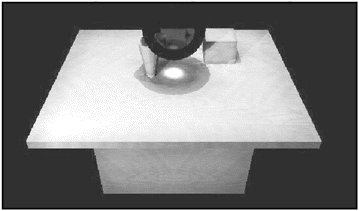Simulating Caustics with Photon Mapping
| [ LiB ] |
Simulating Caustics with Photon Mapping
A very powerful advantage to using photon mapping is its capability to simulate beautiful caustics. Caustics have been around for some time but were poorly simulated using the previous rendering techniques. Caustics occur when multiple specular reflections interact with a diffuse surface. For example, a caustic is generated at the bottom of a champagne glass or the bright focused light transmitted through a glass sphere on a wooden table.
Caustics normally require a large number of photons and, for this reason, many programmers create a separate photon map for storing caustics. This photon map is called the caustic photon map . It helps keep the global photon map to a minimum without overloading it with caustic photons and speeds up the rendering process by searching for fewer photons in the global pho-ton map. The problem with using a caustic photon map is that you need to carefully build the caustic photon map without having duplicates in the global photon map. See Figure 14.9 for an example of caustics.
Figure 14.9. An example of caustics generated from light refracted on the table (diffuse surface) by the sphere (specular surface).

Many programmers implement a special parameter on surfaces for receiving caustics in their applications. It then would be up to the artist who uses the application to set the state of an object to receive caustics. To simulate caustics I used a translucent sphere and refracted the light so that the light would bounce off the sphere and hit the diffuse surface (the table top). Simulating caustics in photon mapping is pretty straightforward.
NOTE
NOTE
Remember,caustics are generated by at least one specular reflection that hits a diffuse surface.If you tried gen erating caustics with ray tracing,you wouldn't get this effect because ray tracing lacks the capability to handle this type of complex effect.
| [ LiB ] |
EAN: 2147483647
Pages: 128